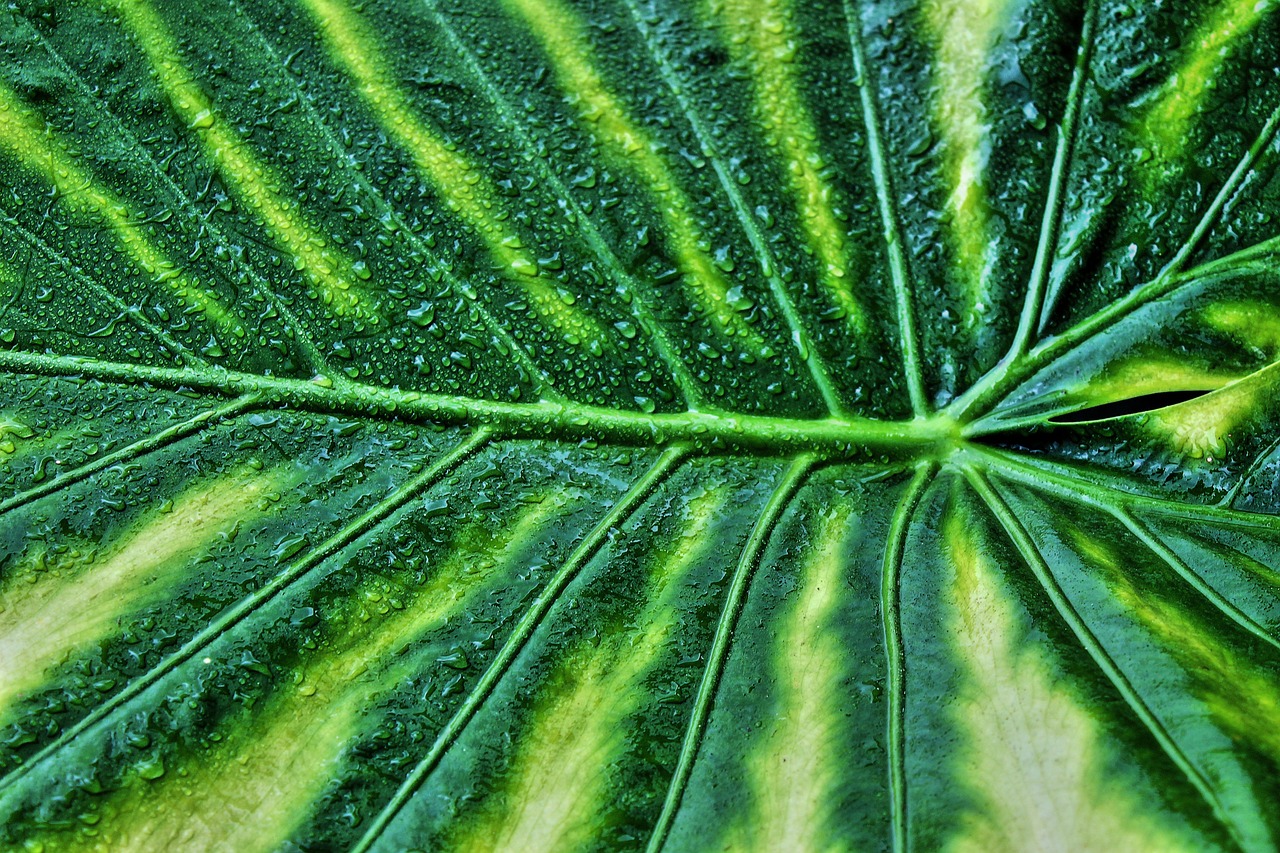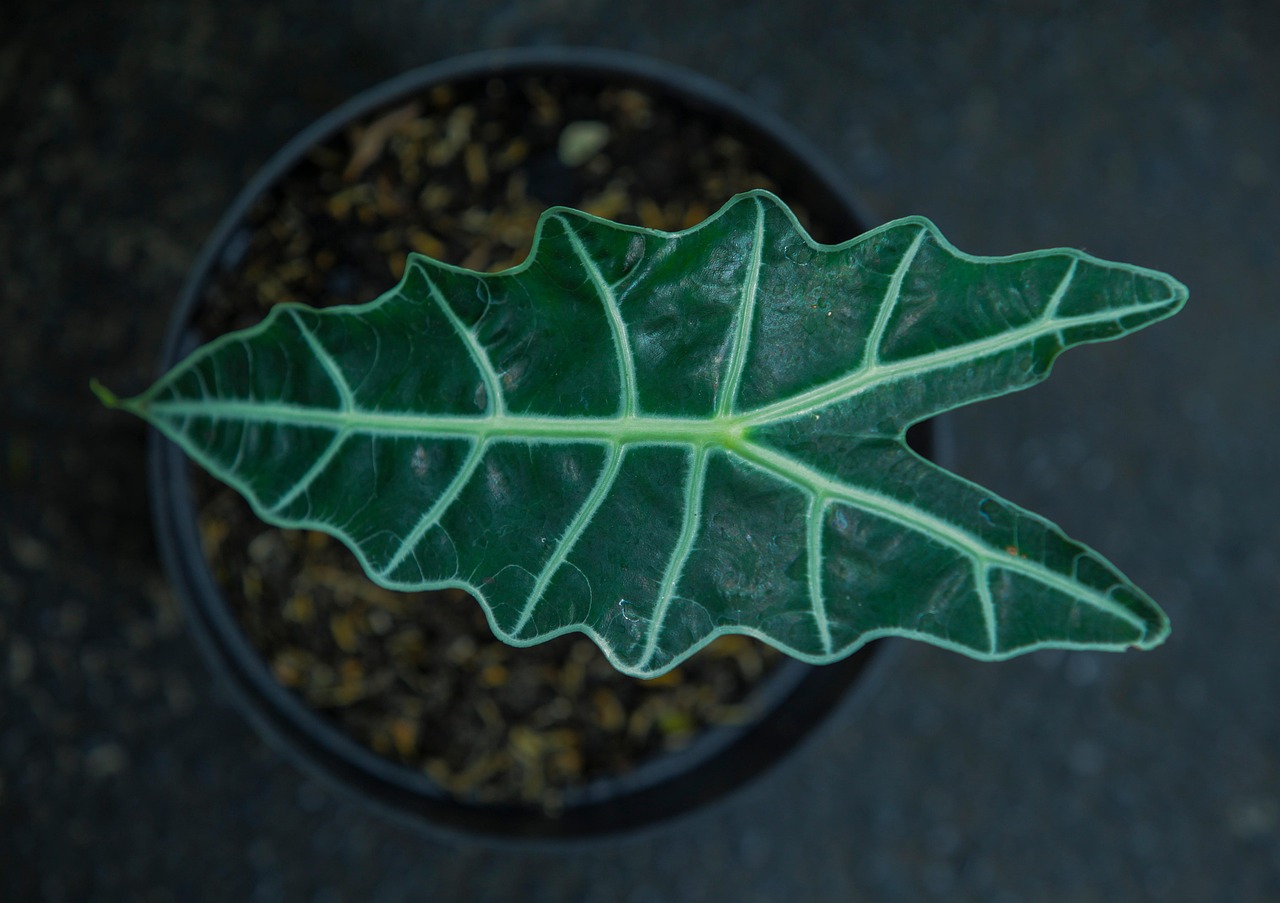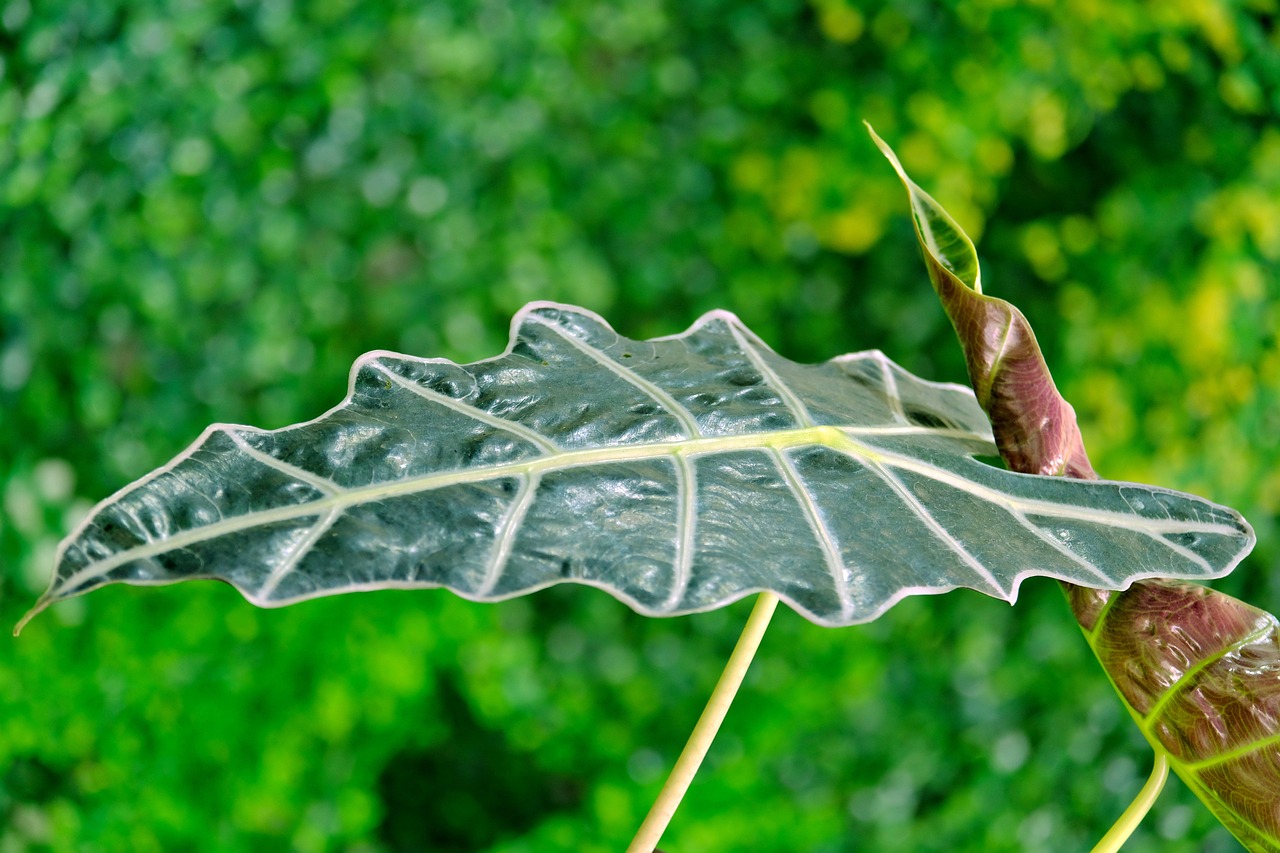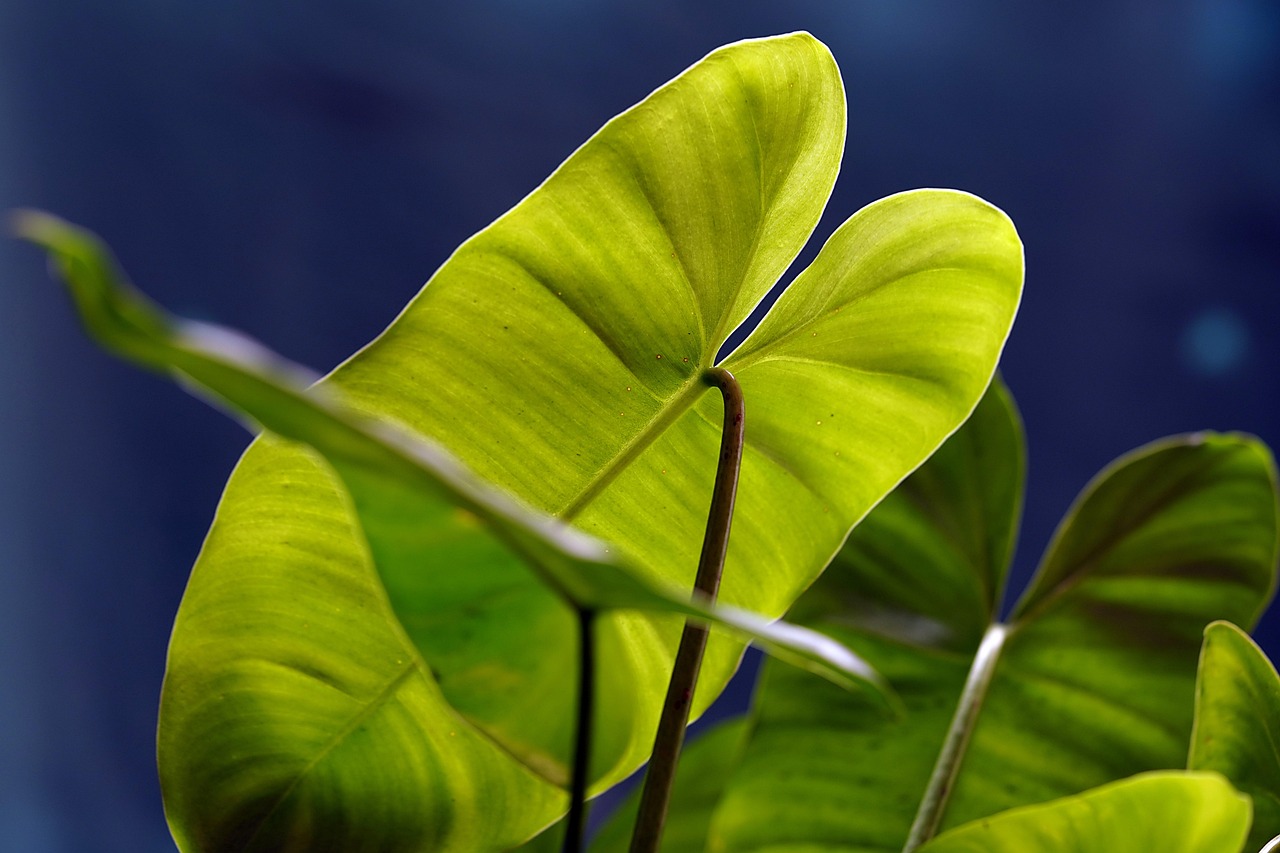Yes, Alocasia plants are toxic to dogs. They contain calcium oxalate crystals, which can cause irritation and discomfort if ingested. Symptoms may include drooling, vomiting, and difficulty swallowing.
Understanding Alocasia and Its Toxicity

Alocasia, often known for their stunning foliage and exotic appearance, belong to the family Araceae. These tropical plants are popular among indoor plant enthusiasts due to their striking leaves and unique shapes. However, while they can enhance the beauty of a home, it is crucial for pet owners to be aware of their potential dangers.
The toxicity of Alocasia plants primarily stems from the presence of calcium oxalate crystals. When chewed or bitten into, these crystals can cause significant irritation to the mouth, throat, and gastrointestinal tract of pets. This makes it essential for dog owners to understand the risks associated with having these plants in their homes.
Many pet owners may wonder how serious the effects of ingestion can be. While Alocasia toxicity typically does not lead to severe health complications, it can result in uncomfortable symptoms for dogs. These symptoms often prompt pet owners to seek veterinary care, leading to unnecessary stress for both the animal and the owner.
Common Symptoms of Alocasia Toxicity in Dogs
If a dog ingests any part of an Alocasia plant, several symptoms may arise. Knowing what to look for can help in taking prompt action if necessary. Common symptoms include:
- Drooling
- Vomiting
- Difficulty swallowing
- Swelling of the mouth and throat
- Diarrhea
- Abdominal pain
These symptoms can vary in severity depending on the amount ingested and the individual dog’s sensitivity. It is advisable for pet owners to monitor their pets closely if they suspect any ingestion of Alocasia.
Treatment for Ingestion
If you believe your dog has ingested Alocasia, it is important to act quickly. Here are steps to consider:
- Remove any remaining plant material from the dog’s reach.
- Observe your dog for any signs of distress or symptoms mentioned earlier.
- If symptoms occur, contact your veterinarian or an emergency pet poison hotline immediately.
Your veterinarian may recommend bringing your dog in for evaluation or suggest home care based on the symptoms presented. It is always better to err on the side of caution when it comes to your pet’s health.
Preventing Accidental Ingestion
To protect your dog from potential harm, it is wise to take preventive measures. Here are some tips:
- Place Alocasia plants out of reach of curious pets.
- Consider using hanging planters or high shelves.
- Provide alternative chew toys that are safe for dogs.
- Educate family members about the toxicity of certain plants.
Creating a safe environment for your pets involves being aware of what plants you have in your home. By taking these precautions, you can reduce the risk of accidental ingestion and ensure a safer living space for your furry friends.
Other Plants to Watch Out For
In addition to Alocasia, many other common houseplants can pose similar risks to dogs. Some notable examples include:
| Plant Name | Toxicity Level |
|---|---|
| Philodendron | Moderate |
| Pothos | Moderate |
| Dieffenbachia (Dumb Cane) | High |
Being aware of these plants can further assist in maintaining a pet-friendly home. Always research any new plants before introducing them into your living space.
Identifying Alocasia Species
There are several species of Alocasia, each with distinct characteristics. Understanding these differences can help pet owners identify which plants they have in their homes. Some popular species include:
- Alocasia Polly: Known for its striking arrow-shaped leaves and prominent veins.
- Alocasia Zebrina: Features zebra-like stems with large, glossy leaves.
- Alocasia Amazonica: Recognized for its dramatic foliage and compact size, making it a favorite among plant lovers.
Each species has its unique aesthetic appeal, but they all share the common trait of being toxic to dogs. Therefore, it is essential to identify the specific type of Alocasia in your home.
Understanding Calcium Oxalate Crystals
The toxicity of Alocasia plants is primarily due to calcium oxalate crystals. These microscopic crystals are found in various parts of the plant, including the leaves and stems. When a dog bites into the plant, these crystals can penetrate the tissues of the mouth and throat, leading to irritation.
Calcium oxalate crystals can cause the following reactions in dogs:
- Mouth Irritation: This can lead to pain, swelling, and difficulty in swallowing.
- Gastrointestinal Distress: Ingesting the plant may result in vomiting and diarrhea.
The severity of these reactions can vary based on the amount consumed and the dog’s overall health. Some dogs may have a milder reaction, while others could experience significant discomfort.
What to Do If Your Dog Ingests Alocasia
If you suspect your dog has ingested Alocasia, it is crucial to act swiftly. Follow these steps for immediate care:
- Stay Calm: Your dog can sense your stress. Staying calm can help keep your pet at ease.
- Remove the Plant: Ensure that no additional plant material is accessible to your dog.
- Examine Your Dog: Check for any visible signs of distress, such as excessive drooling or attempts to vomit.
- Contact a Professional: Call your veterinarian or a pet poison control hotline for advice. They may instruct you to induce vomiting or bring your dog in for treatment.
Providing information about the plant, such as its name and part ingested, can help veterinarians assess the situation more effectively.
Long-Term Effects of Alocasia Toxicity
While ingestion of Alocasia is primarily associated with immediate symptoms, pet owners often wonder about the long-term effects. Generally, most dogs recover fully with prompt treatment and do not suffer from lasting harm. However, there are a few points to consider:
- Repeat Ingestion: Dogs that repeatedly ingest toxic plants may develop a stronger sensitivity over time.
- Underlying Health Conditions: Dogs with pre-existing health issues may experience more severe reactions.
It is essential to monitor your dog’s behavior following any incident of ingestion. If unusual symptoms persist, seek veterinary advice to ensure your pet’s health and well-being.
Creating a Pet-Safe Environment
To prevent accidental ingestion of toxic plants like Alocasia, creating a safe environment for your pets is vital. Here are some strategies to consider:
- Plant Selection: Choose non-toxic plants that are safe for pets. Research options before adding new greenery to your home.
- Designated Plant Areas: Keep plants in rooms that are off-limits to pets or use barriers to restrict access.
- Eductation: Teach family members about the dangers of certain plants and encourage them to be vigilant.
By being proactive in creating a pet-safe space, you can significantly reduce the risk of accidental ingestion and keep your furry companions healthy and happy.
Caring for Alocasia Plants
If you choose to keep Alocasia plants despite their toxicity, proper care is essential for both the plants and the safety of your pets. Here are some care tips:
- Light Requirements: Alocasia thrives in bright, indirect light but can tolerate lower light conditions.
- Watering: Keep the soil consistently moist but not soggy. Overwatering can lead to root rot.
- Humidity: These plants prefer high humidity levels. Consider misting them or placing a humidifier nearby.
Caring for Alocasia properly will help keep them healthy and vibrant while ensuring that they remain out of reach from curious pets.
Recognizing Symptoms of Plant Poisoning

Understanding the symptoms of plant poisoning is essential for any dog owner. Quick recognition can make a significant difference in your dog’s health outcomes. Here are some signs to look for if your dog has ingested Alocasia or another toxic plant:
- Excessive Drooling: This is often one of the first signs of irritation in the mouth and throat.
- Vomiting: Dogs may vomit shortly after ingestion as their body tries to rid itself of the toxin.
- Difficulty Swallowing: Swelling in the mouth or throat can make swallowing painful or challenging.
- Loss of Appetite: A dog that feels unwell may refuse to eat.
- Lethargy: If your dog seems unusually tired or inactive, it could indicate discomfort.
If you notice any of these symptoms after your dog has been around Alocasia, it is crucial to seek veterinary care immediately. Early intervention can prevent more serious complications.
First Aid for Plant Ingestion
If your dog has ingested Alocasia, follow these first aid steps before you reach out to a veterinarian:
- Remove Access: Ensure your dog cannot access any more plants or potentially toxic items.
- Check for Symptoms: Observe your dog for any signs of distress or discomfort.
- Do Not Induce Vomiting Without Guidance: Inducing vomiting can be dangerous. Consult with a veterinarian first.
- Contact a Veterinarian: Provide your vet with as much information as possible, including the type of plant and the amount ingested.
Following these steps can lead to quicker treatment and help your veterinarian provide the best care for your pet.
The Importance of Plant Education
As a pet owner, educating yourself about plant toxicity is vital for maintaining a safe environment. Here are some key points to consider:
- Research Before Purchase: Always research plants before bringing them into your home, especially if you have pets.
- Consult Resources: Use reputable websites or consult with your veterinarian when in doubt about a plant’s safety.
- Join Pet Owner Communities: Engaging with fellow pet owners can provide valuable insights and shared experiences regarding plant safety.
By staying informed, you can make better choices regarding the plants you keep in your home and help ensure the safety of your pets.
Alternatives to Alocasia for Pet Owners
If you love houseplants but are concerned about the toxicity of Alocasia, there are many pet-safe alternatives. Consider the following options:
- Ponytail Palm (Beaucarnea recurvata): This unique plant is non-toxic and easy to care for.
- Bamboo Palm (Chamaedorea seifrizii): This palm adds a tropical feel and is safe for pets.
- <strong Spider Plant (Chlorophytum comosum): Known for its air-purifying qualities, this plant is also safe for dogs.
- Boston Fern (Nephrolepis exaltata): This lush plant is non-toxic and thrives in humid environments.
Choosing non-toxic plants allows you to enjoy greenery in your home without compromising your pet’s safety. Consider researching each plant’s care requirements to find the best fit for your environment.
Creating a Pet-Friendly Garden

>If you enjoy gardening, creating a pet-friendly outdoor space is crucial. Here are some tips to keep in mind:
- Select Safe Plants: Just like indoor plants, ensure that any outdoor plants are non-toxic to dogs.
- Create Boundaries: Use fencing or barriers to keep pets away from potentially harmful areas or plants.
- Avoid Chemical Treatments: Use natural pest control methods and avoid chemical fertilizers that could be harmful to pets.
A well-thought-out garden not only enhances your home but also provides a safe space for pets to explore and play.
The Role of Veterinary Professionals
Your veterinarian plays a crucial role in your pet’s health, especially regarding plant toxicity. Regular check-ups can help maintain your dog’s overall health. Additionally, consult your vet about any concerns regarding plants in your home. They can provide guidance on which plants are safe and how to manage any potential risks associated with plant toxicity.
Having an open line of communication with your veterinarian ensures that you are prepared and informed about any issues that may arise regarding your pet’s exposure to toxic plants.
Monitoring Pet Behavior
As a responsible pet owner, it is essential to closely monitor your dog’s behavior, especially if they have a tendency to chew on plants. Some dogs are naturally curious and may explore their surroundings by tasting plants. Being vigilant can help you catch any potential issues early.
Here are some strategies to help you monitor your pet’s behavior:
- Regular Supervision: Keep an eye on your dog when they are in areas where plants are accessible. This can prevent accidental ingestion of toxic plants.
- Training Commands: Teach commands like “leave it” or “no” to discourage your dog from chewing on plants.
- Positive Reinforcement: Reward your dog for ignoring plants or staying away from designated areas.
Consistent training and supervision can help reduce the likelihood of your dog ingesting harmful plants and keep them safe in your home.
Recognizing Your Dog’s Needs
Understanding your dog’s needs and behaviors can help you create a safer environment. Dogs require physical exercise, mental stimulation, and appropriate chew toys. Providing these can divert their attention from plants:
- Exercise: Regular walks and playtime can help burn off excess energy, making your dog less likely to engage in destructive behavior.
- Mental Stimulation: Interactive toys and puzzles can keep your dog’s mind engaged, reducing their interest in chewing on plants.
- Safe Chew Toys: Offer a variety of safe chew toys to satisfy their natural urge to chew.
By meeting your dog’s physical and mental needs, you create a more balanced and content pet, which can minimize risky behaviors around plants.
Community Resources and Support
E

ngaging with local pet communities can also provide helpful resources for managing plant toxicity concerns. Here are some options to consider:
- Pet Training Classes: These classes can teach you effective training techniques to prevent plant chewing.
- Dog Owner Groups: Joining groups (online or in-person) can offer support and shared experiences regarding plant safety and pet care.
- Local Veterinary Clinics: Many clinics offer workshops or informational sessions on pet health topics, including plant toxicity.
Connecting with others who share similar concerns can provide valuable insights and support in keeping your pets safe.
Final Thoughts
Being a responsible pet owner means understanding the risks associated with household plants like Alocasia. While these beautiful plants can enhance your living space, their toxicity to dogs requires careful consideration. By taking proactive steps, such as educating yourself about plant safety, monitoring your pet’s behavior, and creating a pet-friendly environment, you can significantly reduce the risks associated with toxic plants.
It’s essential to maintain open communication with your veterinarian and stay informed about safe plant alternatives. With patience and awareness, you can enjoy the beauty of indoor gardening while ensuring the well-being of your furry companions. Always remember that prevention is key when it comes to keeping your pets safe from potential hazards in your home.
If you suspect that your dog has ingested any toxic plant, including Alocasia, seek immediate veterinary assistance. Quick action can help mitigate the effects of toxicity and safeguard your dog’s health. Ultimately, a combination of education, vigilance, and proper care will create a harmonious living space for both you and your pets.
